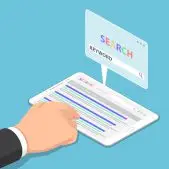Your organization’s sales are stagnant. Despite your marketing team’s numerous promotional efforts, active social media presence, and steady website traffic, customers aren’t completing transactions. This suggests that your conversion problem may not be due to marketing but rather a UI/UX design issue.
In this article, we examine the significant impact of UI/UX design on conversions and offer strategies for improving them through streamlined design practices.

The Link Between UI/UX Design and Conversions
In her article “How Good UX Leads to Conversions,” Jennifer Winter uses a familiar metaphor, you can lead a horse to water, but you can’t make it drink, to examine the relationship between conversions and design.
“Getting the horse to drink in this example, would be a conversion. You can’t force the horse to drink the water any more than you can force a user to take a desired action. Conversion isn’t about making someone do something, it’s about providing an environment that makes doing that thing irresistible.”
This is particularly true in the digital economy, where your website or application serves as your storefront. While a brick-and-mortar business can use friendly employees and an inviting atmosphere to persuade customers to buy, an online business must rely on UI/UX design to create an engaging and intuitive experience.
Studies show that it takes just .05 seconds for a user to form an opinion about your website. This means that first impressions matter immensely; your site must immediately establish trust, expertise, and professionalism. However, winning the first 0.05 seconds is just the beginning. To achieve better conversion rates, your website must succeed in all the micro-moments that complete the customer journey.
The Impact of UI/UX Design on Online Conversions
To understand how UI/UX design can impact online conversions, let’s explore the key elements that influence a customer’s journey and purchase decisions.
First Impressions Matter
- 94% of users’ impressions about a brand are design-related.
- Most users form a perception of a brand within 50 milliseconds of engaging with a website.
- 38% of users will leave a website simply because they deem it unattractive.
These statistics highlight that design isn’t just about aesthetics—it directly affects how users perceive and trust your brand. Investing in a clean, professional, and engaging design can significantly improve user retention and conversion rates.
Website Performance and Navigation
- 40% of website users will leave a website that takes more than 3 seconds to load.
- 64% of shoppers will not return to a slow website.
- 61% of users will leave if they don’t find what they need within 5 seconds.
Your website’s navigation should align with the tasks and goals users want to accomplish. A slow-loading site or confusing navigation will drive potential customers away before they even engage with your product or service. Optimizing site speed and ensuring seamless navigation is crucial for conversions.
Mobile Optimization is Critical
- Mobile users comprise 67% of all website traffic.
With mobile users making up the majority of online traffic, ensuring a responsive and intuitive mobile experience is non-negotiable. A mobile-friendly design that offers seamless browsing, quick load times, and easy navigation will enhance user engagement and improve conversions.
Landing Pages and Trust Signals
Your landing page should immediately elicit trust, explain your product or service, and showcase your unique value proposition (UVP). Strategies for optimizing landing pages include:
- Showcasing social proof through testimonials and case studies.
- Offering a valuable incentive (e.g., an e-book, guide, or discount) in exchange for an email address.
- Using clear and compelling content that communicates the benefits of your offering.
Streamlining Transactions for Higher Conversions
Making the checkout process as quick and easy as possible is critical. Users have little patience for complex or confusing transaction flows. A streamlined, intuitive checkout experience that minimizes friction will significantly boost your conversion rates.
Understanding Your Users Through UX Research
If you’re having trouble seeing your website or application through the eyes of your users, investing in UX research can provide valuable insights.
By conducting user research, your organization can identify which site elements encourage engagement and which ones deter users. This allows you to make data-driven decisions that enhance usability and improve conversion rates.
Key Takeaways
- First impressions matter. Users will judge your brand within milliseconds based on design alone.
- Website performance is paramount. Users expect fast load times and seamless navigation; otherwise, they will leave and not return.
- UX design influences purchasing decisions. A well-optimized, user-friendly, and mobile-responsive website is crucial for business success.
- Investing in UX research and testing can improve conversions. Understanding user behavior helps optimize UI/UX design to meet user needs effectively.
Improving your website’s usability and user experience is crucial for online success. Our experts at UpTop can help you measure usability and test UI/UX design changes to optimize conversions. Let’s connect and discuss how user experience testing can help optimize your UI/UX design for improved conversions.





Comment